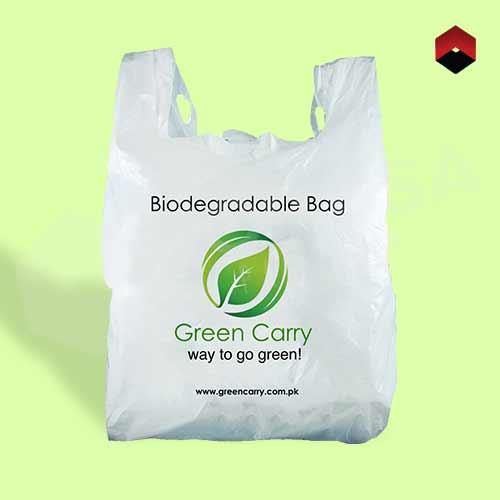In a world increasingly conscious of environmental concerns, the quest for sustainable alternatives has become paramount. Among the various contributors to environmental degradation, single-use plastics stand out as a significant culprit. These plastics, particularly polyethylene bags, have inundated landfills, polluted oceans, and harmed wildlife. However, in recent years, a promising solution has emerged: biodegradable poly bags. These bags offer the convenience of traditional plastic bags without the long-lasting environmental impact. This article delves into the science behind biodegradable poly bags, their benefits, challenges, and their role in fostering a more sustainable future.
Understanding Biodegradable Poly Bags
Biodegradable poly bags are crafted from polymers that can decompose naturally over time. Unlike traditional plastic bags, which persist for hundreds of years, biodegradable alternatives break down into harmless compounds through biological processes. Typically, these bags are made from plant-based materials such as corn starch or sugarcane, which are renewable resources. The decomposition process of biodegradable poly bags is facilitated by microorganisms present in the environment, leading to reduced waste accumulation and environmental harm.
Advantages of Biodegradable Poly Bags
Environmental Friendliness: The primary advantage of biodegradable poly bags lies in their reduced environmental impact. Unlike conventional plastic bags, which endure for centuries, biodegradable alternatives decompose relatively quickly, minimizing pollution and harm to ecosystems.
Renewable Resources: Biodegradable poly bags are often derived from renewable resources such as corn starch or sugarcane. This reliance on renewable feedstocks reduces dependence on finite fossil fuels and contributes to a more sustainable production process.
Reduced Landfill Burden: By decomposing into natural elements, biodegradable poly bags alleviate the burden on landfills. This characteristic is especially crucial as overflowing landfills pose significant environmental and health hazards.
Consumer Appeal: With growing environmental consciousness, consumers are increasingly favoring products with minimal environmental impact. Biodegradable poly bags align with this preference, offering a more sustainable option for everyday use.
Challenges and Considerations
While biodegradable poly bags offer significant promise, several challenges and considerations warrant attention:
Certification and Standards: Ensuring the biodegradability and compostability of poly bags requires adherence to recognized standards and certifications. Without proper certification, there is a risk of greenwashing or misleading claims regarding the environmental credentials of these products.
Performance and Durability: Biodegradable poly bags must strike a balance between biodegradability and functionality. Ensuring adequate durability and performance while still facilitating decomposition poses a technological challenge for manufacturers.
Waste Management Infrastructure: For biodegradable poly bags to realize their potential, appropriate waste management infrastructure is crucial. Composting facilities capable of processing biodegradable materials need to be readily available to ensure proper disposal and decomposition.
Cost Considerations: At present, biodegradable poly bags may incur higher production costs compared to conventional plastic bags. However, as demand grows and technology advances, economies of scale may drive down costs, making these bags more economically viable.
The Road Ahead
Biodegradable poly bags represent a significant step towards mitigating the environmental impact of single-use plastics. However, their widespread adoption requires concerted efforts from various stakeholders:
Legislation and Regulation: Governments play a vital role in incentivizing the use of biodegradable poly bags through legislation, taxation, or subsidies. By implementing policies that encourage the adoption of sustainable alternatives, policymakers can drive market transformation towards greener practices.
Consumer Awareness and Education: Educating consumers about the benefits of biodegradable poly bags and the importance of proper disposal is essential. Increased awareness can drive consumer demand for eco-friendly alternatives and foster responsible consumption habits.
Research and Innovation: Continued research and innovation are necessary to enhance the performance, affordability, and scalability of biodegradable poly bag technology. Collaborative efforts between industry, academia, and research institutions can accelerate progress in this field. If you want to know more information about cosmetic boxes wholesale visit TopUSAPackaging
Conclusion
In the quest for a more sustainable future, the adoption of biodegradable poly bags represents a significant stride towards reducing plastic pollution and preserving our environment. While challenges remain, the potential benefits of these bags are undeniable. By embracing innovation, promoting awareness, and implementing supportive policies, we can pave the way for a greener tomorrow where single-use plastics are no longer a threat to our planet.

